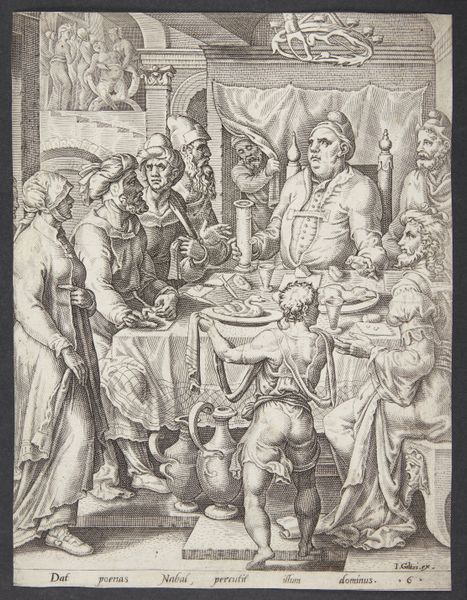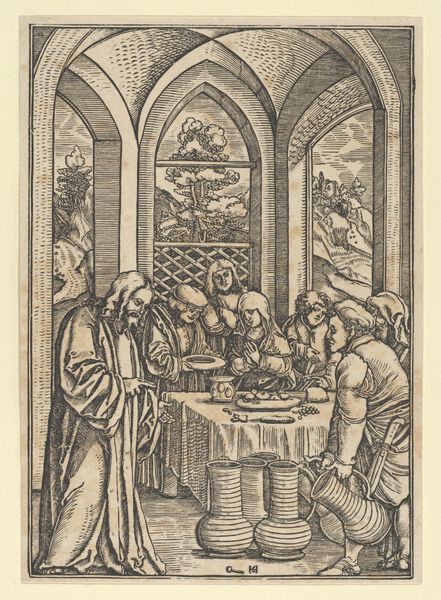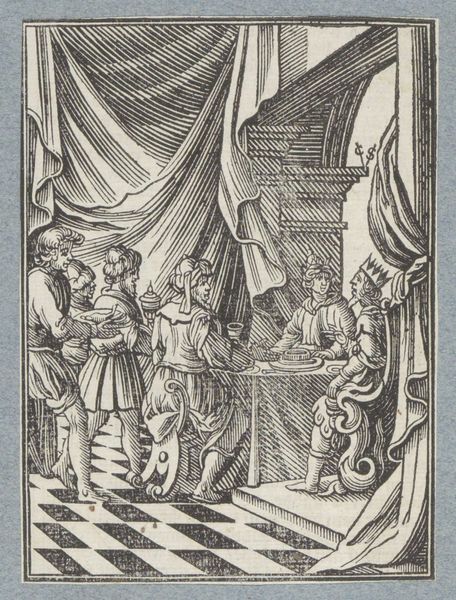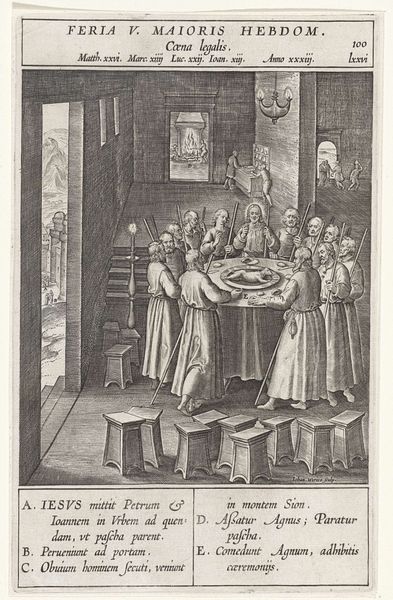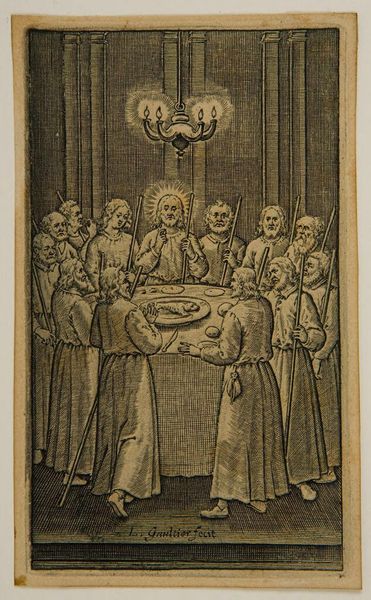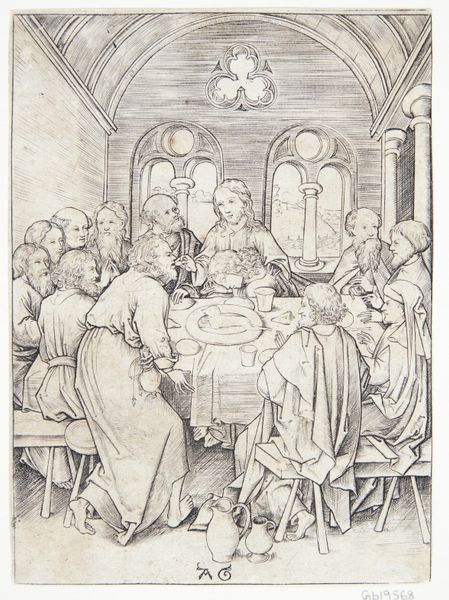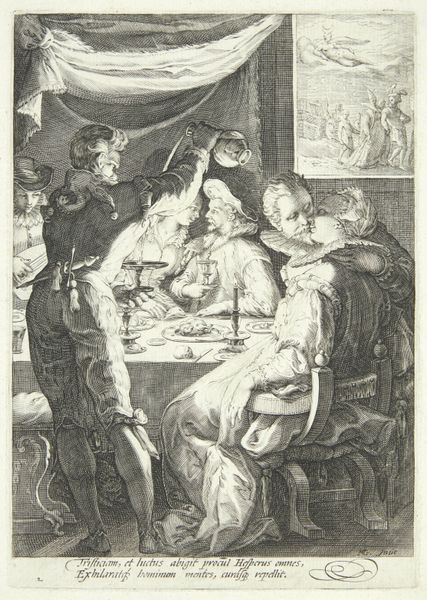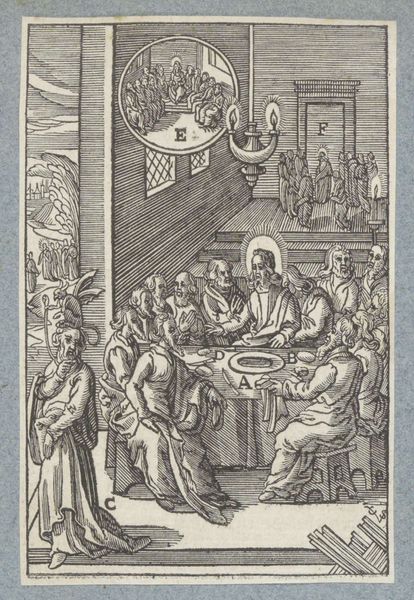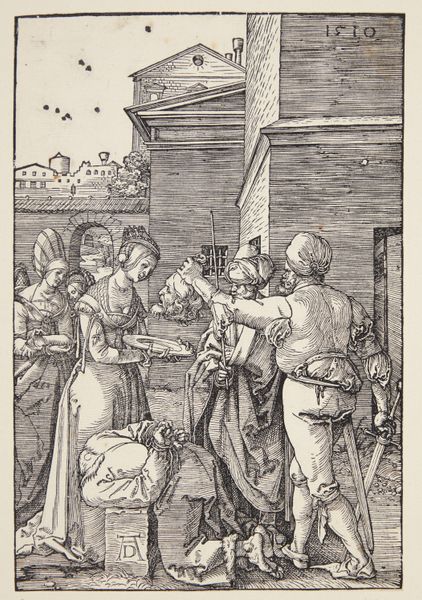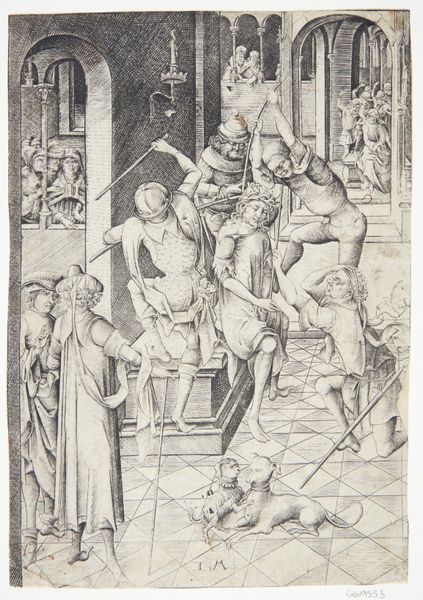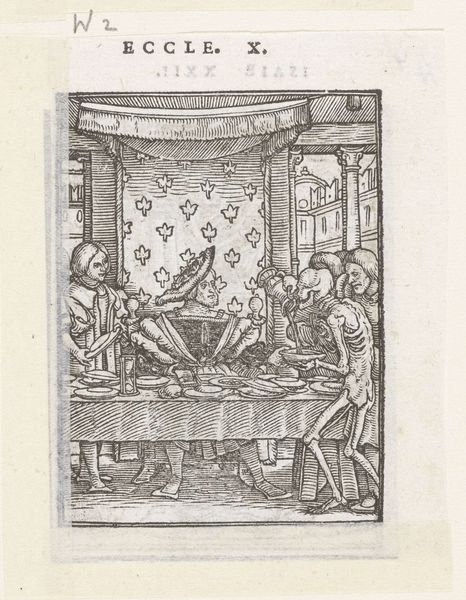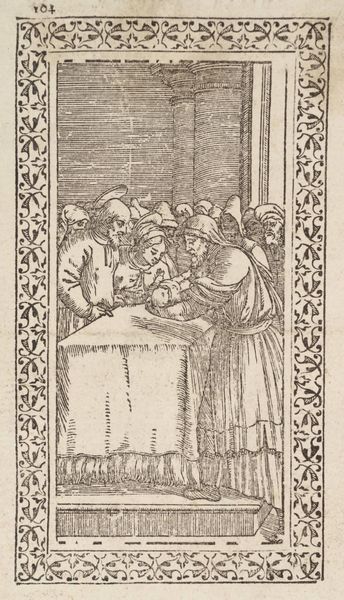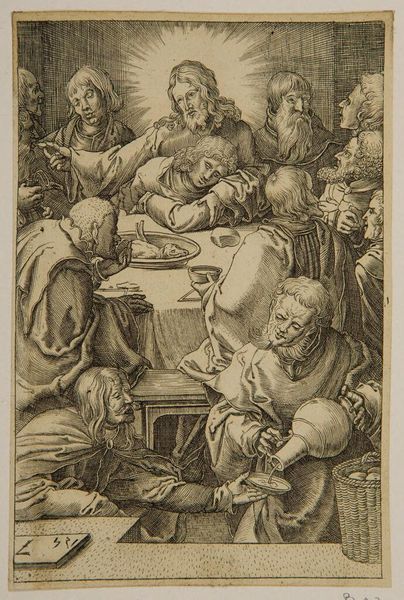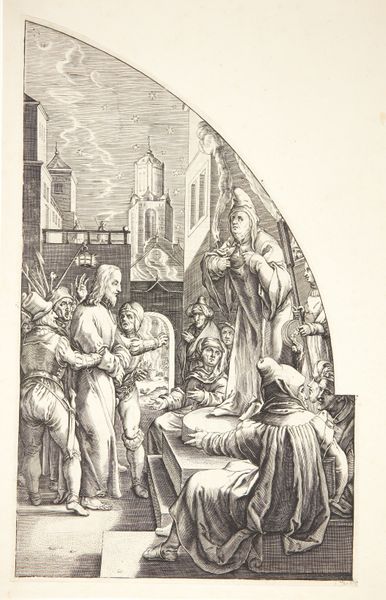
painting, sculpture, enamel
painting
sculpture
figuration
sculpture
enamel
history-painting
decorative-art
italian-renaissance
Dimensions: 2 3/4 × 2 3/8 in. (7 × 6 cm)
Copyright: Public Domain
Editor: This enamel painting, "The Last Supper" by Jean II Pénicaud, dates from the mid-16th century. Its monochrome palette and small scale give it a jewel-like quality. I’m struck by how the artist managed to create such a dynamic composition with so few colors. How do you interpret the formal elements at play here? Curator: The limited color palette—primarily grays and whites—forces us to focus on the artist’s handling of line and form. Note the rigorous orthogonal perspective, receding to a vanishing point, likely behind the figure of Christ. This technique not only creates spatial depth, but also positions the viewer within a pre-defined geometrical relation to the divine subject matter. Editor: The figures seem almost sculptural in their solidity, especially with how the light falls on them. Curator: Indeed, the artist has used chiaroscuro to define their volumes, thereby flattening the emotional drama of the scene. Look, for instance, at the repetition of circular halos. It echoes not only a symbolic harmony, but also a formal unity. Consider how these circles, which float near the vertical lines of the window’s grid, give structure to an otherwise very energetic pictorial space. Do you see how the plate containing their final meal rests in the horizontal center of that frame? Editor: Yes, I hadn't noticed the centrality before. So it’s less about storytelling and more about the relationships between forms? Curator: Precisely. The narrative content is subservient to the formal structure. Pénicaud’s arrangement prioritizes formal balance and optical impact. The subject is relevant inasmuch as its inherent qualities of figures and geometries can provide a satisfying set of formal problems to resolve. Editor: I’ll admit, I was initially drawn to the biblical aspect, but seeing it as a composition of shapes and lines offers a completely different way to appreciate it. Thanks. Curator: My pleasure. Close examination of such works enriches one’s awareness of the power inherent in formal systems of composition, which may be discovered outside history and meaning.
Comments
No comments
Be the first to comment and join the conversation on the ultimate creative platform.
